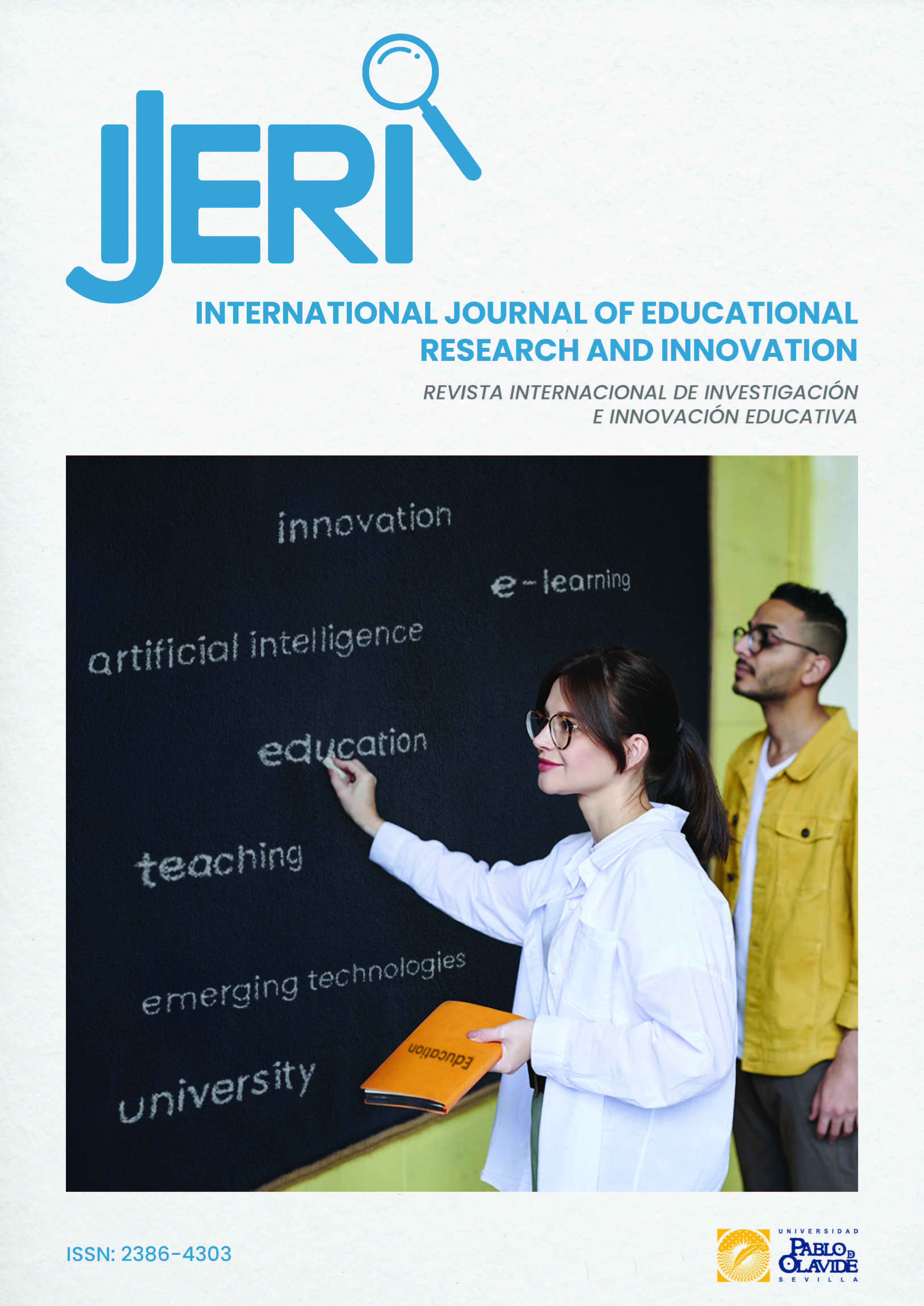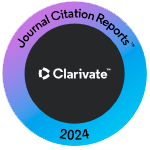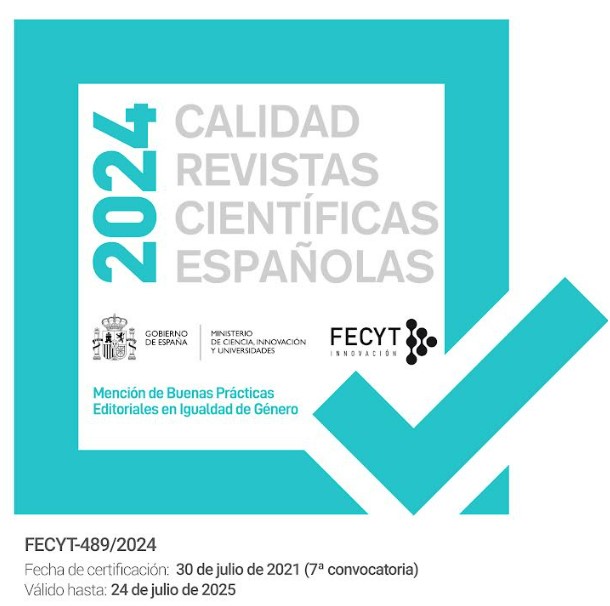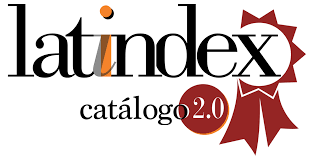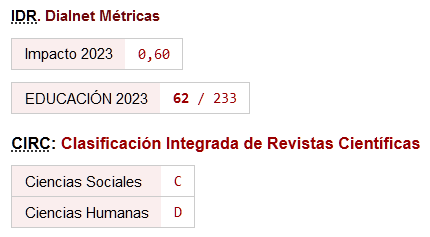Proyecto de un dispositivo electrónico en el contexto STEAM para relacionar resultados de mediciones físicas con sonidos, y su análisis a través de la percepción de profesores de Ciencias
DOI:
https://doi.org/10.46661/ijeri.9391Palabras clave:
STEAM, Sensores, Arduino, Relaciones matemáticas, Tecnología, Habilidades digitales, Tecnología Educativa, Formación de profesoresResumen
Este trabajo presenta el proyecto y detalles de un sistema electrónico, con aspectos de software y hardware, para generar sonidos asociadas a los valores de mediciones de fenómenos físicos, como temperatura u otros. La propuesta tiene potencial para crear actividades divertidas y motivadoras en el aula, incentivando a los estudiantes a pensar en la asociación directa entre aspectos científicos y tecnológicos. El proyecto tiene un enfoque STEAM (Ciencia, Tecnología, Ingeniería, Artes y Matemáticas) donde una placa de procesamiento Arduino mide el valor de un fenómeno físico con un sensor, calcula una relación matemática para definir una frecuencia de sonido asociada al fenómeno y luego envía una señal de salida para excitar a un altavoz. El sistema electrónico propuesto es sencillo, pero este tema puede no resultar muy familiar para muchos profesores de ciencias y entonces este artículo les explica paso a paso para permitir su efectiva comprensión y posterior uso en el aula. Además, este artículo también presenta una discusión con profesores de ciencias para analizar su percepción cuando se les reta a comprender y analizar el sistema propuesto desde una perspectiva docente, donde se resaltaron preocupaciones acerca de cuestiones como la falta de capacitación y de materiales, pero donde también indicaran positivamente que la propuesta es factible y tiene un potencial docente satisfactorio.
Descargas
Citas
Akşan, E., & Eryilmaz, S. (2011). Why don’t mathematics teachers use instructional technology and materials in their courses? Procedia- Social and Behavioral Sciences, 15, 2471-2475. https://doi.org/10.1016/j.sbspro.2011.04.130
Aliyu, J., Osman, S., Daud, M. F., & Kumar, J. A. (2021). Mathematics teachers' pedagogy through technology: a systematic literature review. International Journal of Learning, Teaching and Educational Research, 20(1), 323-341, https://doi.org/10.26803/ijlter.20.1.18
Alves-Pereira, M., Rapley, B., Bakker, H., & Summers, R. (2019). Acoustics and biological structures. Z. Fellah & E. Ogam (Eds), Acoustics of Materials (1 22). IntechOpen, UK., https://doi.org/10.5772/intechopen.82761
Badia, A., & Iglesias, S. (2019). The science teacher identity and the use of technology in the classroom. Journal of Science Education and Technology, 28(3), 532-541. https://doi.org/10.1007/s10956-019-09784-w
Baecher L. & Chung S. (2020) Transformative professional development for in-service teachers through international service learning. Teacher Development, 24(1), 33-51. https://doi.org/10.1080/13664530.2019.1682033
Bashir, A., Alhammadi, M., Awawdeh, M., & Faisal, T. (2019). Effectiveness of using Arduino platform for the hybrid engineering education learning model. In: 2019 Advances in Science and Engineering Technology International Conferences (ASET), Dubai, United Arab Emirates, 1 6, https://doi.org/10.1109/ICASET.2019.8714438
Beardsley, M., Albó, L., Aragón, P., & Hernández-Leo, D. (2021). Emergency education effects on teacher abilities and motivation to use digital technologies. British Journal of Educational Technology, 52(3), 1455-1477, https://doi.org/10.1111/bjet.13101
Bers, M. U. (2019). Coding as another language: A pedagogical approach for teaching computer science in early childhood. Journal of Computers in Education, 6(4), 499-528, https://doi.org/10.1007/s40692-019-00147-3.
Budi, K. S., Muslim, S., & Santosa, A. B. (2019). Literature Study on the Influence of Arduino Microcontroller Trainer Media on Creative Thinking Level and Student Learning Outcomes in Microcontroller Learning. Proceedings of the International Symposium on Social Sciences, Education, and Humanities (ISSEH 2018). Atlantis Press. 90 94. https://doi.org/10.2991/isseh-18.2019.22
Carvalho, I. S. G. (2020). The construction of Digital Teaching Skills: A challenge for Teacher Training. In: Eighth International Conference on Technological Ecosystems for Enhancing Multiculturality. 892-895. https://doi.org/10.1145/3434780.3436663
Chang, Yu-Shan, & Tsai, Meng-Chen (2021). Effects of design thinking on artificial intelligence learning and creativity. Educational Studies, 1-18, https://doi.org/10.1080/03055698.2021.1999213
Costa, S.C.; Fernandes, J.C. (2018) Listening to pH. Journal of Chemical Education. 96(2). 372-376. https://doi.org/10.1021/acs.jchemed.8b00641
Dagan, O. (2022). Student Teachers’ Mental Models of Everyday Adaptive Control Systems. In: Hallström, J., Williams, P.J. (Eds), Teaching and Learning about Technological Systems. Contemporary Issues in Technology Education. (171-192). Springer. https://doi.org/10.1007/978-981-16-7719-9_9
Deboer, G. E. (1991). A School Science Seeks its Own Identity. History of Ideas Science Education: Implications for Practice (first ed., chapter 6). Teachers College Press, USA.
Del Olmo-Muñoz, J., Bueno-Baquero, A., Cózar-Gutiérrez, R., & González-Calero, J. A. (2023), Exploring Gamification Approaches for Enhancing Computational Thinking in Young Learners. Education Sciences, 13(5). https://doi.org/10.3390/educsci13050487
Edwards, Chris. (2022). Self-Taught: Moving from a Seat-Time Model to a Mastery-Learning Model. Rowman & Littlefield, Lanham, Maryland, USA.
Eshach H., & Kukliansky, I. (2018). University Physics and Engineering Students’ Use of Intuitive Rules, Experience, and Experimental Errors and Uncertainties. Int. Journal of Science and Mathematics Education, 16(5), 817–834, https://doi.org/10.1007/s10763-017-9817-3
Garrido, N., Pitto-Barry, A., Soldevila-Barreda, J., Lupan, A., Boyes, L. C., Martin, W. H., & Barry, N. P. (2020). The sound of chemistry: Translating infrared wavenumbers into musical notes. Journal of Chemical Education, 97(3), 703-709. https://doi.org/10.1021/acs.jchemed.9b00775
Gómez, M.J., Calderón, M., Sánchez, V., Clemente, F.G, Ruipérez-Valiente J.A., (2022). Large scale analysis of open MOOC reviews to support learners’ course selection. Expert Systems with Applications, 210, 118400. https://doi.org/10.1016/j.eswa.2022.118400
Hammond, Debora (2019). The legacy of Ludwig von Bertalanffy and its relevance for our time. Systems Research and Behavioral Science, 36(3), 301 307. https://doi.org/10.1002/sres.2598
Kearney, M., Schuck, S., & Burden, K. (2022) Digital pedagogies for future school education: promoting inclusion, Irish Educational Studies, 41(1), 117-133, https://doi.org/10.1080/03323315.2021.2024446
Koehler, M. J., & Mishra, P. (2009). What is technological pedagogical content knowledge? Contemporary Issues in Technology and Teacher Education, 9(1), 60 70.
Leyesa, M. C., Mariano, O. R, &. Galvez, R. (2022). Project Cost Processing System for Electronics Systems Integrator. IEEE Region 10 Humanitarian Technology Conference (R10HTC) 2022, Hyderabad, India, 211-215. https://doi.org/10.1109/R10 HTC54060.2022.9929640.
Lodi, M., & Martini, S. (2021). Computational Thinking, Between Papert and Wing. Science & Education, 30(4), 883-908. https://doi.org/10.1007/s11191-021-00202-5
López-Poveda, E. A. (2014). Development of Fundamental Aspects of Human Auditory Perception. In Romand, R. &; Varela-Nieto (Eds) Development of Auditory and Vestibular Systems (4th ed, pp. 287-314. Academic Press, UK, https://doi.org/10.1016/B978-0-12-408088-1.00010-5
Lopresto, M. C. (2013). Using musical intervals to demonstrate superposition of waves and Fourier analysis. Physics Education, 48(5), 640, https://doi.org/10.1088/0031-9120/48/5/640
Lucardie, D. (2014). The impact of fun and enjoyment on adult's learning. Procedia Social and Behavioral Sciences, (142), 439-446. https://doi.org/10.1016/j.sbspro.2014.07.696
Muhazir, A., & Retnawati, H. (2020). The teachers’ obstacles in implementing technology in mathematics learning classes in the digital era. Journal of Physics: Conference Series. IOP Publishing, 012022. https://dx.doi.org/10.1088/1742-6596/1511/1/012022
Munukutla, S., Bertoy, A., Rush, S., & Ramamoorthy, A. (2022). Molecular music: a modern accompaniment to NMR pedagogy. Journal of Chemical Education, 99(2), 810-818, https://doi.org/10.1074/mcp.O113.030239
Negrete, J. C. (2023). Mechatronics in Agriculture and the Teaching of Mathematics. Research and Advances in Education, 2(7), 6-11. https://doi.org/10.56397/RAE.2023.07.02
Nordby, S. K., Bjerke, A. H., & Mifsud, L. (2022). Computational thinking in the primary mathematics classroom: A systematic review. Digital Experiences in Mathematics Education, 8(1), 27-49. https://doi.org/10.1007/s40751-022-00102-5
Novita, R., & Herman, T. (2021). Using technology in young children mathematical learning: A didactic perspective. Journal of Physics: Conference Series. IOP Publishing, 012013. https://doi.org/10.1088/1742-6596/1957/1/012013.
Orgill, Marykay; York, Sarah; Mackellar, Jennifer (2019). Introduction to systems thinking for the chemistry education community. Journal of Chemical Education, 96(12), 2720-2729, https://doi.org/10.1021/acs.jchemed.9b00169
Papert, S. (1980). Images of the Learning Society (chap. 8). In Mindstorms: children, computers, and powerful ideas. Basic Books Inc, USA.
Perea Martins, J.E.M. (2019). Introducing the concepts of measurement accuracy and precision in the classroom. Physics Education, 54(5), 055029. https://doi.org/10.1088/1361-6552/ab3143
Parhami, B. (2018). Computer Architecture for Big Data. In: Sakr, S., Zomaya, A. (eds) Encyclopedia of Big Data Technologies (pp. 481–487). Springer, https://doi.org/10.1007/978-3-319-63962-8_164-1
Pienimäki, M., Kinnula, M., & Iivari, N. (2021). Finding fun in non-formal technology education. International Journal of Child-Computer Interaction, (29), 100283, https://doi.org/10.1016/j.ijcci.2021.100283
Posillico, J. J.; Edwards, D. J., Roberts, C., & Shelbourn, M. (2022). Curriculum development in the higher education literature: A synthesis focusing on construction management programmers. Industry and Higher Education, 36(4), 456–470. https://doi.org/10.1177/09504222211044894
Saubern, R., Urbach, D., Koehler, M., & Phillips, M. (2020). Describing increasing proficiency in teachers’ knowledge of the effective use of digital technology. Computers & Education, (147), 103784, https://doi.org/10.1016/j.compedu.2019.103784
Schina, D., Esteve-González, V. & Usart, M. (2021). An overview of teacher training programs in educational robotics: characteristics, best practices and recommendations. Education and Information Technologies, 26, 2831–2852. https://doi.org/10.1007/s10639-020-10377-z
Sek, A, & Moore, B.C. (1995). Frequency discrimination as a function of frequency, measured in several ways. The Journal of the Acoustical Society of America. 97(4), 2479-86, http://doi.org/10.1121/1.411968
Schoenfeld, A. H. (2020). Mathematical practices, in theory and practice. ZDM – Mathematics Education, 52(6), 1163-1175, https://doi.org/10.1007/s11858-020-01162-w
Szymkowiak, A., Melović, B., Dabić, M., Jeganathan, K., & Kundi. G. (2021). Information technology and Gen Z: The role of teachers, the internet, and technology in the education of young people. Technology in Society, (65), https://doi.org/10.1016/j.techsoc.2021.101565
Tican, C., & Deniz, S. (2019). Pre-service teachers’ opinions about the use of 21st century learner and 21st century teacher skills. European Journal of Educational Research, 8(1), 181-197, https://doi.org/10.12973/eu-jer.8.1.181
Triantafyllou, S. A., & Sapounidis, T. Game-based Learning approach and Serious Games to learn while you play. IEEE World Engineering Education Conference (EDUNINE 2023), Bogota, Colombia, 2023, pp. 1-6, https://doi.org/10.1109/EDUNINE57531.2023.10102872
Trna, J.; Trnova, E. (2015). Revival of Demonstration Experiments in Science Education. The Eurasia Proceedings of Educational & Social Sciences, (2), 49 56.
Tümkaya, G. S., & Miller, S. (2020). The perceptions of pre and in-service teachers' self-efficacy regarding inclusive practices: A systematised review. Ilkogretim Online - Elementary Education Online, 19(2),1061-1077. https://doi.org/10.17051/ilkonline.2020.696690
Weidlich, J., & Kalz, M. (2023). How well does teacher education prepare for teaching with technology? A TPACK-based investigation at a university of education. European Journal of Teacher Education, 1-21, https://doi.org/10.1080/02619768.2023.2243645
Wing, Jeannette M. (2006). Computational thinking. Communications of the ACM, 49(3), 33-35. https://doi.org/10.1145/1118178.1118215
Yao, G., Wang, J., Cui, B. I., Ma, Y. (2022). Quantifying effects of tasks on group performance in social learning. Humanities and Social Sciences Communications. 9(282), https://doi.org/10.1057/s41599-022-01305-2
Zha, X. (2021). Application of MATLAB Software in Higher Mathematics Teaching. International Conference on Forthcoming Networks and Sustainability in the IoT Era, Nicosia, Turkey, 261 266. https://doi.org/10.1007/978-3-030-99581-2
Zhang, Y. & Hao, C. (2016). Comparative Study of In-service Teacher Education between China and Germany. Educational Process: International Journal, 5(3), 212 - 222. http://dx.doi.org/10.12973/edupij.2016.53.3
Descargas
Publicado
Cómo citar
Número
Sección
Licencia
Derechos de autor 2024 João E. M. Perea Matins

Esta obra está bajo una licencia internacional Creative Commons Atribución-NoComercial-SinDerivadas 4.0.

